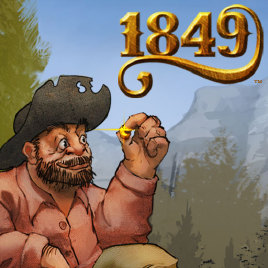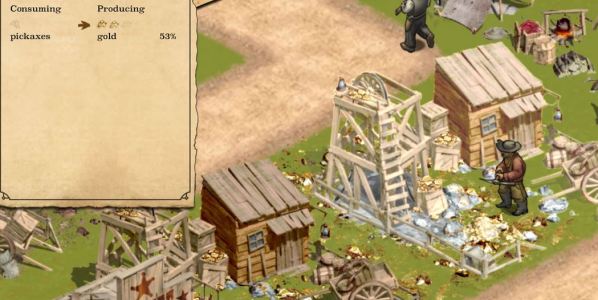
Developer: Somasim
Publisher: Somasim
Platform: Mobile – Android, iOS PC – IndieGameStand, Steam
There is something about city management sims that hooks people. Most of us probably have no desire to ever deal with the realities of legislation, building codes, and the vast expenditures that a real city planner has to deal with. Put them in a game though and suddenly it’s fun. What if you could manage a city during the California Gold Rush? If that sounds awesome to you then you’re definitely going to want to check out 1849.
In this game, you’re the mayor of a newly settled town somewhere in Northern California. The goal is to hopefully capitalize off the sudden immigration of people as Gold Rush fever sets in. With good enough planning, the town will boom with people. Fail to provide them with the right resources though and they’ll simply move on to another town.

Maps come in three varieties (small, medium, large) and have an isometric viewpoint. Players must build their town up with homes, wheat fields, jailhouses, and a good deal of other buildings. Many buildings require a chain of other buildings to produce any items at all. For example, you can make fancy clothes for the citizens but that requires first harvesting cotton, turning it into fabrics, then transforming the fabric into an outfit. This same style of mechanic holds true for creating wine and other specialties.
Getting all the buildings required for these types of chains is expensive, but pays off. Other towns need things that you can provide. Some may spend money for your excess fabrics and wood, while others offer to sell pickaxes to you. For the most part, players always have to manage both exporting and importing because no plot of land has everything. Sometimes, events crop up that task the player to do certain things before the time runs out.
Although it might seem a bit simpler than other games of the genre, 1849 is fairly difficult to do well in. Many of my missions ended in failure as I bought the wrong buildings or didn’t realize what other towns would want to trade for. After a while you do get the hang of things, though. It’s a total joy to see your town grow into a bustling, successful place.

There are a few ways in which the experience could be improved. The view cannot be rotated, only zoomed in on. This leads to many times you can’t see where exactly to click or tell if something was placed properly. It is also unfortunate that there is no easy reference to view what chain of item creation is needed before creating specific buildings. Finally, it appears there are not multiple saves for sandbox towns, which is a definite disappointment.
Even with a handle of troubles, 1849 is a game I find myself coming back to often. The core gameplay mechanics are fantastic and easy to learn. It’s always fun to try fussing around in a new town to see how much it can expand. As such, anyone with a taste for city management games should definitely embark on a digital Gold Rush journey with 1849.

3 out of 5 alpacas
Review code provided
About our rating system